Simon Holmes - Getting MEAN with Mongo, Express, Angular, and Node
Here you can read online Simon Holmes - Getting MEAN with Mongo, Express, Angular, and Node full text of the book (entire story) in english for free. Download pdf and epub, get meaning, cover and reviews about this ebook. year: 2015, publisher: Manning Publications, genre: Home and family. Description of the work, (preface) as well as reviews are available. Best literature library LitArk.com created for fans of good reading and offers a wide selection of genres:
Romance novel
Science fiction
Adventure
Detective
Science
History
Home and family
Prose
Art
Politics
Computer
Non-fiction
Religion
Business
Children
Humor
Choose a favorite category and find really read worthwhile books. Enjoy immersion in the world of imagination, feel the emotions of the characters or learn something new for yourself, make an fascinating discovery.
- Book:Getting MEAN with Mongo, Express, Angular, and Node
- Author:
- Publisher:Manning Publications
- Genre:
- Year:2015
- Rating:5 / 5
- Favourites:Add to favourites
- Your mark:
Getting MEAN with Mongo, Express, Angular, and Node: summary, description and annotation
We offer to read an annotation, description, summary or preface (depends on what the author of the book "Getting MEAN with Mongo, Express, Angular, and Node" wrote himself). If you haven't found the necessary information about the book — write in the comments, we will try to find it.
Summary
Getting MEAN with Mongo, Express, Angular, and Node teaches readers how to develop web applications end-to-end using the MEAN stack. Youll systematically discover each technology in the MEAN stack as you build up an application one layer at a time, just as youd do in a real project.Purchase of the print book includes a free eBook in PDF, Kindle, and ePub formats from Manning Publications.
About the Technology
Traditional web dev stacks use a different programming language in every layer, resulting in a complex mashup of code and frameworks. Together, the MongoDB database, the Express and AngularJS frameworks, and Node.js constitute the MEAN stacka powerful platform that uses only one language, top to bottom: JavaScript. Developers and businesses love it because its scalable and cost-effective. End users love it because the apps created with it are fast and responsive. Its a win-win-win!
About the Book
Getting MEAN with Mongo, Express, Angular, and Node teaches you how to develop web applications using the MEAN stack. First, youll create the skeleton of a static site in Express and Node, and then push it up to a live web server. Next, youll add a MongoDB database and build an API before using Angular to handle data manipulation and application logic in the browser. Finally youll add an authentication system to the application, using the whole stack. When you finish, youll have all the skills you need to build a dynamic data-driven web application.
Whats Inside
- Full-stack development using JavaScript
- Responsive web techniques
- Everything you need to get started with MEAN
- Best practices for efficiency and reusability
About the Reader
Readers should have some web development experience. This book is based on MongoDB 2, Express 4, Angular 1, and Node.js 4.
About the Author
Simon Holmes has been a full-stack developer since the late 1990s and runs Full Stack Training Ltd.
Table of Contents
- PART 1 SETTING THE BASELINE
- Introducing full-stack development
- Designing a MEAN stack architecture PART 2 BUILDING A NODE WEB APPLICATION
- Creating and setting up a MEAN project
- Building a static site with Node and Express
- Building a data model with MongoDB and Mongoose
- Writing a REST API: Exposing the MongoDB database to the application
- Consuming a REST API: Using an API from inside Express PART 3 ADDING A DYNAMIC FRONT END WITH ANGULAR
- Adding Angular components to an Express application
- Building a single-page application with Angular: Foundations
- Building an SPA with Angular: The next level PART 4 MANAGING AUTHENTICATION AND USER SESSIONS
- Authenticating users, managing sessions, and securing APIs APPENDIXES
- Installing the stack
- Installing and preparing the supporting cast
- Dealing with all of the views
- Reintroducing JavaScript - available online only
Simon Holmes: author's other books
Who wrote Getting MEAN with Mongo, Express, Angular, and Node? Find out the surname, the name of the author of the book and a list of all author's works by series.

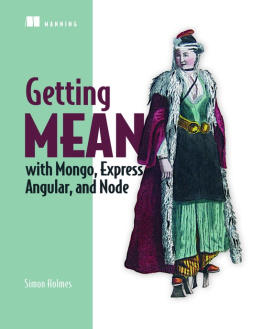


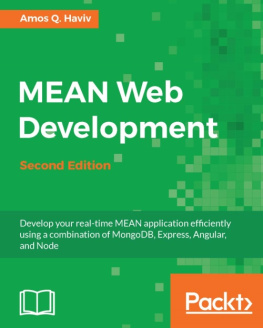

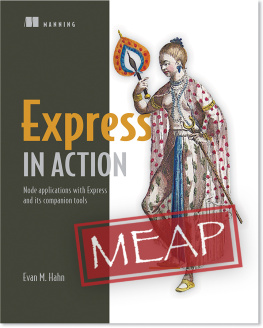

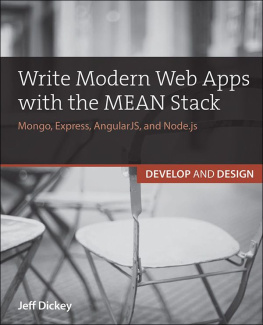
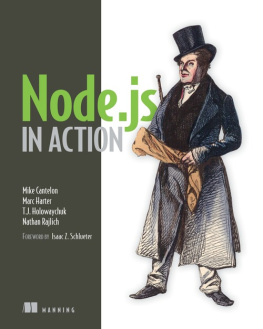
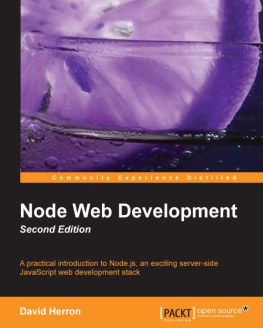

 Recognizing the importance of preserving what has been written, it is Mannings policy to have the books we publish printed on acid-free paper, and we exert our best efforts to that end. Recognizing also our responsibility to conserve the resources of our planet, Manning books are printed on paper that is at least 15 percent recycled and processed without the use of elemental chlorine.
Recognizing the importance of preserving what has been written, it is Mannings policy to have the books we publish printed on acid-free paper, and we exert our best efforts to that end. Recognizing also our responsibility to conserve the resources of our planet, Manning books are printed on paper that is at least 15 percent recycled and processed without the use of elemental chlorine.